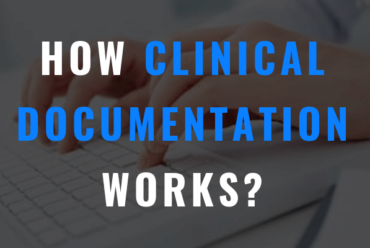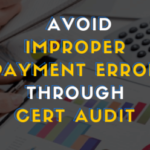The Centre for Medicare and Medicaid Services offers extensive and detailed DME Medicare documentation guidelines in general, as well as other guidelines for documentation that can be found in Local Coverage Determinations and National Coverage Determinations.
Durable Medical Equipment billing continues to scrutinized by Medicare and other Commercial Carriers, so everyone needs to understand DME Documentation Requirements. Without understanding and following documentation requirements, You’re putting your office at risk to fail an audit.
Not only that, but you face refunding an insurance carrier or CMS, which would be an unfortunate and unnecessary revenue loss for your practice. It’s important to learn about the complicated documentation requirements for DME from a general rules perspective as well as what is needed for specific kinds of DME.
1. Medical Necessity
The lengthy documentation process for DMEs includes a paper trait that heavily supports medical necessity of the DME and for the suppliers that require prior approval, a provider prescription and clinical documentation are necessary and must support this requirement.
Medicare requires a prescription before approving payment for any DME. This prescription may originate with a physical therapist starting the documentation process and an approved physician providing the prescription.
Communication is key, as the script and supporting documentation need to prove medical necessity, In doing so, the following information is required.
- Licensed provider’s plan of treatment.
- Anticipated benefits and outcomes from using the DME.
- Detailed member’s clinical and functional status so that a determination of medical necessity can be made.
- Patient’s medical record.
2. Avoid Insufficient Documentation Errors
If any condition of payment is missing, including just one physician signature, your claim is at risk to fall into the insufficient documentation error category, which has the potential to prolong payment or cause a denial.
Beware: Your claim could fall in this error category if the reviewer couldn’t conclude that some allowed services were actually provided at the level billed, or were medically necessary.
Here’s how to avoid insufficient documentation error for DME:
- Check which DME Healthcare Common Procedure Coding System (HCPCS) codes require a valid detailed written order.
- Make certain the physician’s National Provider Identifier is on the valid detailed written order.
- Know that Medicare will pay claims for DME only if the ordering physician and DME supplier are actively enrolled in Medicare on the date of service.
- As a condition of payment, be sure that a physician, Physician Assistant, Nurse Practitioner documents a face to face encounter examination with a beneficiary in the 6 months prior to the written order for certain items of DME.
3. Document Confidently
When dealing with payment denials, you need to get up to speed on:
- Understanding the latest policies from major insurance carriers on pre – authorization requirements.
- Using the right modifiers to confirm you have the proper documentation needed for reimbursement.
- Comprehending advanced beneficiary notices for Medicare and Commercial insurance carriers.
- Knowing what proof of delivery rules you should be following.
DME items are not professional services, your practice is purchasing the equipment in hopes that you will receive a profit in return. DME present a particular challenge when it comes to payment.
If you are audited and don’t have proper documentation, your organization will have to give that money back and possibly be penalized. So it’s time to get your DME documentation ducks in a row.


